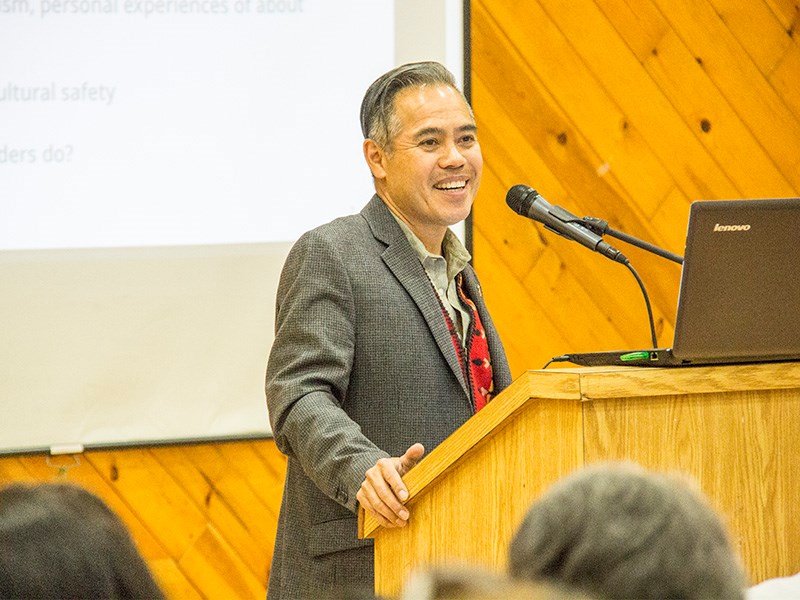Progressive, self-determining with a treaty, lots of health-care workers, strong governance and leadership: those are reasons Tla’amin Nation easily understands and is interested in what cultural safety and humility means for first nations people in the health care system, according to First Nations Health Authority (FNHA) chief medical officer Evan Adams.
Adams was in Tla’amin recently to give a presentation on work being undertaken in health services for first nations and aboriginal people, much of it in response to systemic racism in the health care system.
“I hear from first nations clients when they have had quite disastrous, horrible experiences within the health care system,” said Adams. “Then I have to go to the chief of staff and say, ‘I’ve had this complaint,’ and often the response is, ‘Oh, that’s impossible, racism doesn’t exist in my hospital and doesn’t exist in my workers,’ which is actually quite a ridiculous posture; racism is alive and well and it happens.”
Vancouver Coast Health (VCH) management does not disagree with Adams’ claim.
“Have I heard these stories? Absolutely,” said VCH aboriginal health executive advisor Leslie Bonshor. “Is Evan Adams saying anything we haven’t heard before? Absolutely not.”
According to Bonshor, the challenge for her organization is to encourage and assist aboriginal people in the complaint process. VCH is working with first nations community health nurses and workers in an ongoing effort to address these issues, she said.
VCH is working to encourage first nations community health nurses and workers to assist in that process, she added.
Physicians are key partners, according to Bonshor, and focus must be placed on developing training that will work for them as well.
Doctor Bruce Hobson, physician lead of Powell River Division of Family Practice, said his organization has not been approached about racism issues in this region, but the subject is one it recognizes as important.
“One of our areas of focus is continuing professional development, so we always promote topics that are relevant to our community,” said Hobson. “Last year, one of the presentations focused on developing better understanding of health needs and resources in Tla’amin.”
All regional health authorities in the province, including VCH and FNHA, have entered into a formal agreement, the Declaration of Commitment on Cultural Safety and Humility in Health Services for First Nations and Aboriginal people in BC, to commit their workers to improving health service to first nations people.
There are two key components in approaching the situation, according to Adams. One: cultural humility, which is a process of self-reflection to arrive at a way for the health-care provider and patient to work together.
An example, he said, is a nurse hurrying about getting vital signs, entering notes and reporting the status of a patient.
“For the patient, their family’s point of view is that grandma is sick, she’s not very well and they’re highly stressed looking after her, and the nurse is running around and being really noisy,” said Adams.
Cultural humility is about points of view in these situations, he added.
“Rather than being mean or fighting with a patient or insulting them, being disrespectful or just having a negative interaction,” said Adams, “the patient, the patient’s family and the nurse can state their position and find a way to work together.”
The second key component in the care of aboriginal people is cultural safety, said Adams, where the outcome is based on an open and respectful interaction.
“If I come to the doctor and say, ‘I want to use traditional medicine when I’m sick,’ the doctor can say, ‘I’ve heard of traditional medicine before, great, let’s work together on that,’ instead of saying, “Oh, that’s such baloney, singing and praying and taking roots and berries is ridiculous,’” said Adams.
Cultural safety, no matter what culture you are from, he added, should always include a respectful experience.



